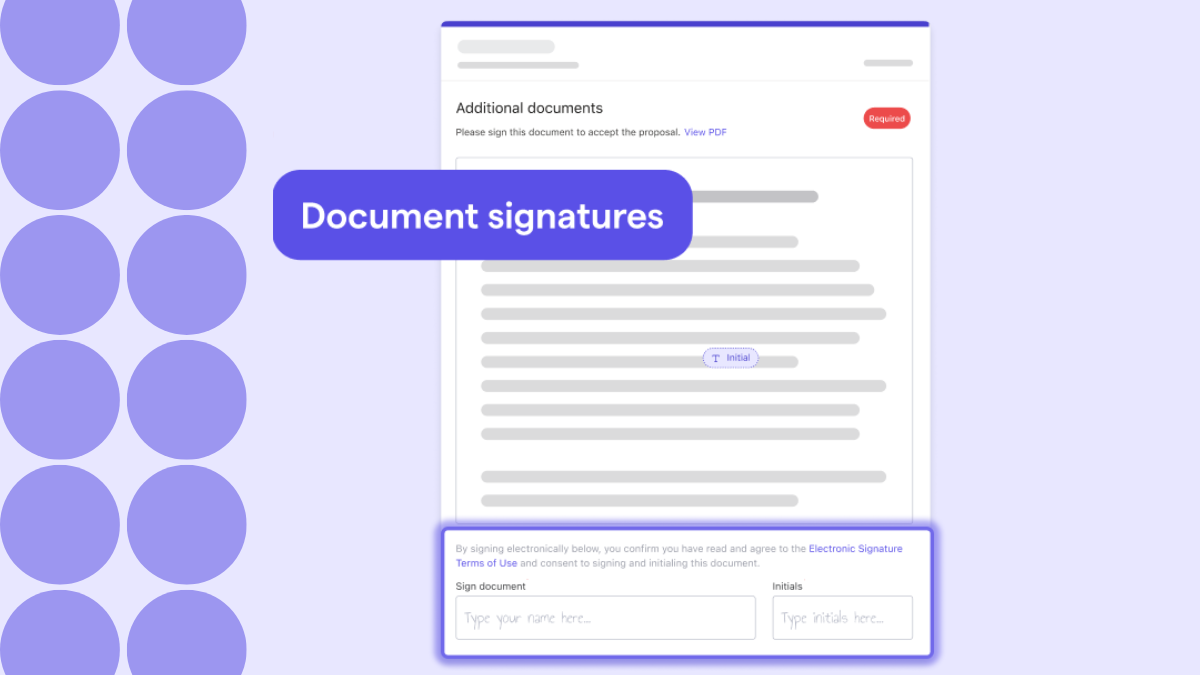How one accounting firm managed and conquered scope creep

One of the most common issues that organizations face is how to identify and manage scope creep, or out-of-scope work. In a nutshell, scope creep is the expansion of project requirements beyond your initial client engagement agreement. But with technology such as Ignition on the market to help manage scope creep, professional services businesses are learning to embrace it for the benefit it is. And they’re reaping rewards.
In this article, we talk to Ignition client Dillon Towey, Chief Operating Officer at Franchise Resource, LLC in Omaha, Nebraska. He shares the accounting practice’s experience with scope creep and how they have successfully managed it using Ignition.
How Franchise Resource started
Dillon Towey and his brother Luke didn’t hesitate to start their own accounting firm eight years ago. “My brother is a qualified accountant, and I studied accountancy in high school before getting a business administration and management degree and going into sales,” Dillon explains.
“Luke, his wife, and I identified a gap in the market for accounting services for franchise businesses and launched Franchise Resource, LLC,” he says.
The Toweys always took a professional approach to their business. But things were a bit rough-and-ready in the early days.
“We were doing work for our clients on evenings and weekends and roping in family members to help us out,” Dillon Towey says. “Our mom and then our aunt were our first hires. Initially, we weren’t charging our clients much. This was partly out of ignorance about how to correctly price our services and partly out of a desire to attract clients. That meant we didn’t have much revenue coming in, which encouraged us to stick with free or low-cost technological solutions longer than we probably should have. For instance, we’d write out proposals and engagement letters in a Microsoft Word document then email them to prospective or existing clients.”What is scope creep and how can it be managed?
Like many service providers, Franchise Resource was experiencing scope creep. Scope creep is when your clients ask you to take on work that goes beyond the original agreement you made in your engagement letter.

“I’m the Chief Operating Officer at Franchise Resource, and I’ve always concentrated on the sales and onboarding side of things,” Dillon Towey says. “Like people in similar roles at other accounting firms, I’ve lost count of the number of new clients who’ve told me, ‘My stuff is very easy; it will hardly take you any time to take care of it’. That can often be true in the early days. But then the client gets a business credit card. Then they get a couple more business credit cards and maybe a business loan. Now things aren’t so quick and easy, but you’re still charging the client as if nothing has changed.”
Like many accounting firm owners, Dillon and Luke Towey recognized the issue long before they did anything about it. “We’d chosen to go with the fixed-fee approach where, for instance, we’d charge a client $600 a month on the assumption that we would spend no more than six hours taking care of their accounting needs,” Dillon Towey says. “For a long time, even when we could see it was taking eight,10, or 12 hours to take care of their needs, we’d just take it in the shorts.”
Though Dillon doesn’t entirely regret this approach while building his business, he recognizes that it wasn’t sustainable over the longer term.
“The franchise industry is tight-knit, and it was to our advantage that we acquired a reputation early on for providing clients with excellent value for money,” Dillon says. “To this day, we’ve never had to spend a penny on marketing. The business has scaled up rapidly, especially in the last few years, purely thanks to word-of-mouth advertising. But many things that are feasible when a business has a handful of staff servicing a relatively small number of clients become unfeasible once the business reaches a certain size.” (At the time of writing, Franchise Resource, LLC, has more than 250 clients and a workforce of 19 employees and contractors.)
Scope creep effects
Again, like many accounting firm owners, the Toweys put off having awkward conversations with clients about scope creep.
And once again, the Toweys aren’t outliers here. Ignition’s State of client engagement report found that, of the more than 500 American accountants and bookkeepers surveyed, 89% had avoided or delayed having an awkward conversation with a client, and 43% of those who experienced increases in the scope of client work ended up absorbing the increased time and cost themselves.

Dillon says that potentially awkward conversations do sometimes turn out to be uncomfortable. “We dragged our feet on this and resigned ourselves to thinner margins for longer than I’d like to admit,” he says. “When we finally went to clients and showed them we were doing lots more work for them than was initially agreed and told them that we would need to start charging them more for that work, most of them accepted that. But we did get some pushback. Some clients weren’t prepared to pay more and left.”
Fortunately, the Toweys soon discovered a technological solution that allowed them to quickly identify and handle scope creep in a professional manner.
“As the business scaled up, we progressively moved away from the low-tech, cheap-tech way of doing things,” Dillon Towey says. “We used QuickBooks from the get-go. Our next notable investment in automation technology was in Karbon’s practice management software. Then, in mid-2021, we discovered Ignition, which made sending out proposals and engagement letters to potential and existing clients much easier,” he says.
“We established a relationship with Ignition, and after we discussed our scope creep issues with some of Ignition’s senior staff, the company added a service edits feature. That makes it easy to go in and adjust a proposal even after a client has accepted it. For example, when QuickBooks raised its subscription fees a while back, we had to pass that price increase on to our clients. The service edits feature made it straightforward to do that. We went in and made the change, and all our clients were alerted that the price of their QuickBook subscription had increased and that their monthly bills would reflect that going forward,” he adds.
Tech and embracing scope creep
Now, scope creep has gone from being a bit of a stressor to a benefit for the Toweys.
“We integrated Ignition with the rest of our tech stack, which had several upsides,” Dillon Towey says. “To take one example, once a proposal is electronically signed off on in Ignition, that pushes the work item over into Karbon, and the client onboarding process automatically begins. When your firm is onboarding 15 to 20 clients a month, as our firm now is, that kind of efficiency makes everything much easier, especially for those staff involved in sales and onboarding,” he says.
Greater efficiency isn’t the only selling point of Ignition. The platform makes it possible to detail and charge for any additional out-of-scope services that you provide. However, as How to prevent and manage out-of-scope work describes, it’s important to ensure that you have a paragraph in your terms template that covers how out of scope work is handled. Your engagement letters should clearly set out the services you’re expected to provide, how often you’ll provide them, and who is ultimately responsible for what.
“We still operate on a fixed-fee basis, but we now charge clients an overage if servicing them takes longer than has been agreed,” Dillon Towey says. “We understand things come up and there will be months when a client needs more assistance than usual. We’re happy to provide that additional help. However, we make it clear to clients that they have to pay extra for extra hours.”
Franchise Resource’s practice management software, which is integrated with Ignition, tracks how much time the firm spends servicing a client in any given month. If the client doesn’t exceed their allotted hours, they pay the standard monthly fee. If the client does exceed them, they get charged more.
“Everything is transparent, so there is rarely any unpleasantness,” Dillon says. “Thanks to Karbon and Ignition, if a client that has paid for six hours chews up eight hours, I’m automatically alerted, and the client is charged for those extra two hours when they pay their monthly bill. Scope creep will never go away. But accounting firms can now use their tech stack to ensure they don’t end up out of pocket and their clients don’t end up feeling aggrieved.”
Over to you
Want to learn more about how Ignition can boost your bottom line by making the most of scope creep? Find out by starting a 14-day free trial.



